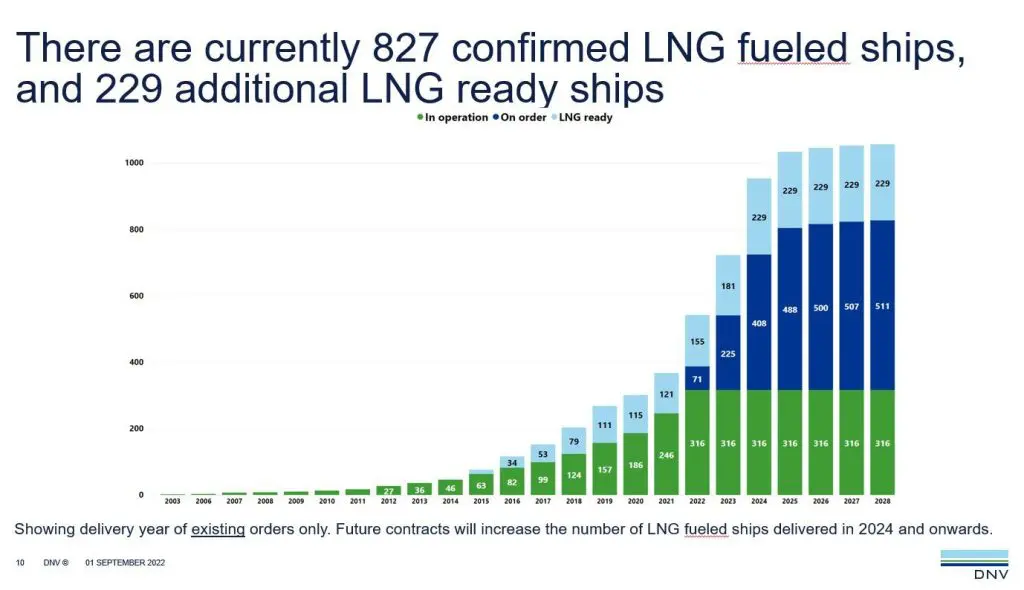Classification society DNV said that owners have placed orders for thirteen LNG-powered vessels in August.
DNV reported nine LNG-powered newbuilds last month and record 83 LNG-powered vessels in the second quarter of this year.
“Despite a quite slow newbuild market in general, we counted 13 more LNG-fueled ships ordered in August. This month saw a mix of smaller and larger vessels,” Martin Wold, principal consultant at DNV, said.
The August count includes orders by Japan’s MOL and Furetank/Algoma.
“The net increase of our AFI database is only 11 though, as the electrification of the Norwegian ferry sector continues and we have moved two more ferries which have been retrofitted for pure battery operation,” he said. These are two ferries owned by Fjord1.
Besides LNG-fueled vessels, Wold said that methanol growth also continues as CMA CGM formally confirmed its first order for six large methanol-fueled container vessels.
In addition, Wold noted that Shell and Zim recently signed a huge LNG bunkering deal for 10 LNG-powered vessels worth $1 billion, proving that LNG bunkering “still can make economical sense during these unprecedented times.”
827 confirmed LNG-powered ships
According to DNV’s Alternative Fuels Insight platform, 316 LNG-powered ships are already in operation, while there are 511 LNG-fueled vessels on order.
Owners also placed orders for 229 LNG-ready vessels.

LNG-powered car and passenger ferries continue to lead the way with 42 in operation. The operational fleet also includes 41 oil/chemical tankers, 39 containerships, and 38 crude oil tankers.
As per vessels on order, LNG-powered containerships account for a big part of the orders with 170 units. Owners also ordered 95 car carriers, 53 bulk carriers, and 51 crude oil carriers.
These statistics do not include smaller inland vessels or dual-fuel LNG carriers.
Besides LNG-powered and LNG-ready vessels, there are 39 bunkering vessels in operation and 18 on order, the platform shows.

